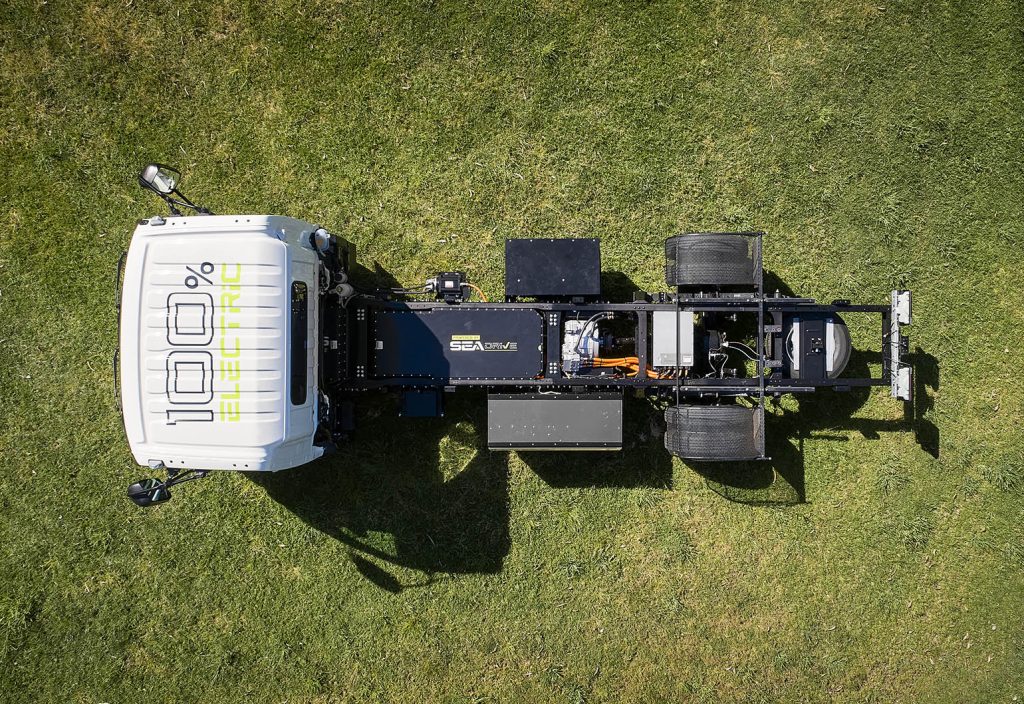At a factory in outer suburban Melbourne, Australia’s first electric truck manufacturer is assembling a fleet that will enhance the nation’s carbon abatement efforts.
Australian start-up SEA Electric is an electric vehicle manufacturer specialising in the assembly and electrification of commercial vehicles. The company’s President Asia-Pacific, Bill Gillespie, tells create that it is committed to electrifying Australia’s transport sector.
“Transport makes up around 19 per cent of Australia’s total CO2 emissions, while the road freight sector in turn accounts for 38 per cent of total transport emissions. Clearly, reducing emissions here can have a major impact on reducing Australia’s carbon footprint,” he says.
“However, in 2021 the medium and light truck market in Australia accounted for 21,774 vehicles, or half of all commercial vehicles sold. Just under 100 of these were electric, so for Australia to meet a goal of net-zero by 2050 will need a monumental shift.”
That shift is well underway at SEA Electric, which has been working towards the goal of establishing a viable Australian electric truck manufacturing industry since 2013.
Roll out
In September 2021, SEA Electric celebrated a significant milestone when its first electric-powered SEA 300-45 truck rolled off its Melbourne production line, following the company receiving Australian Design Rules certification for local volume production.
The certification makes it one of only three original equipment manufacturers building trucks in Australia and the only one making an electric truck.
The Japanese-sourced Hino trucks, on which the SEA 300-45 and others in the range are based, arrive at the Melbourne facility as fully constructed and trimmed cabs, and the remainder of the truck is built from components assembled on site.
Batteries are also assembled on site for each specific order, with trucks rolling through a five-stage process before completion.
Mewan Jayatilake, SEA-Electric’s National Parts and Technical Services Manager, is one of a team of 17 engineers engaged on the project, working in the fields of electrical, mechanical and mechatronics.
Jayatilake says SEA Electric’s proprietary motor control technology, the chemistry of its batteries and the location of its components are key areas where the company is ahead of its competitors.
“We’re at the leading edge of technology right now because electric trucks are not necessarily very well-known in the market. We are the first to have wheels turning and actual customers out in the field with our electric trucks,” he says.
“Our technology is slightly different to what is seen or heard of elsewhere. Our batteries are of a different chemistry. Our motors are not the standard induction motors that you would find on any other EV conversion. All the transitioning ancillary components that were otherwise belt driven, are now driven through electricity.
“A motor or a pump is also powered by electricity rather than by a belt driven system. All of this means that the trucks we build versus the trucks everyone is familiar with — from a technological perspective and an engineering perspective, there’s very little overlap.”
Jayatilake says the vehicles also use direct drive configuration.
“We don’t have a two-speed differential or a gearbox of any sort,” he says.
“The motor is what handles everything from zero kilometres per hour, all the way up to 80 or 110, whatever the limit chosen for the platform is. It’s all one seamless delivery.
That means the motors need to have both high start-up torque and high running torque, but not a very high number of revolutions per minute (RPM).
“For example, a Tesla electric motor might rev to around 18,000 or 20,000 RPM, whereas our motors top out at 4,000 RPM, but we have about four times more torque right from the start,” Jayatilake says.
“Because our motors produce much higher torque at low revs, the batteries therefore need to discharge their energy at a slower rate. What you get from that is long-lasting components.”
The right formula
Battery chemistry is a key area where SEA Electric diverges from the electric heavy-vehicle herd, with the company using a lithium-ion nickel manganese cobalt chemistry that it says provides an excellent balance of energy storage, longevity, performance, and safety.
“Our battery chemistry is an NMC [nickel manganese cobalt] type, so our batteries don’t need water cooling or any kind of active cooling,” Jayatilake says
“They don’t run hot in general, but the thermal management itself is managed by having very slow energy discharges that inherently generates less heat.”
He explains that the location of the batteries is another point of difference, with the batteries and power system positioned away from the steer axle, allowing for improved weight distribution and better driving dynamics.
“If you look at any of the competitor electric trucks, you’ll find that the batteries are hung off the side of the main chassis rails,” Jayatilake says.
“Whereas on our truck the motor, the batteries, the power distribution, everything is on the centre line of the truck. That provides a lot of stability during cornering. It’s all balanced and the truck is comfortable when the mass of the truck is on the centre line.
“In the event of an accident or collision where there’s a side impact, the battery is also very well protected by not only the chassis rails, but other ancillary components that are often attached to the chassis rail on the side.”
SEA Electric’s current production rate of one truck per week is set to ramp up to six units per week by the end of 2022, with the longer-term goal of 2500 units per year by 2025.
The company is currently looking to scale up Melbourne manufacturing capability and is eyeing another building that will double its current footprint.
For more of the latest engineering news sign up to create’s weekly newsletter.
